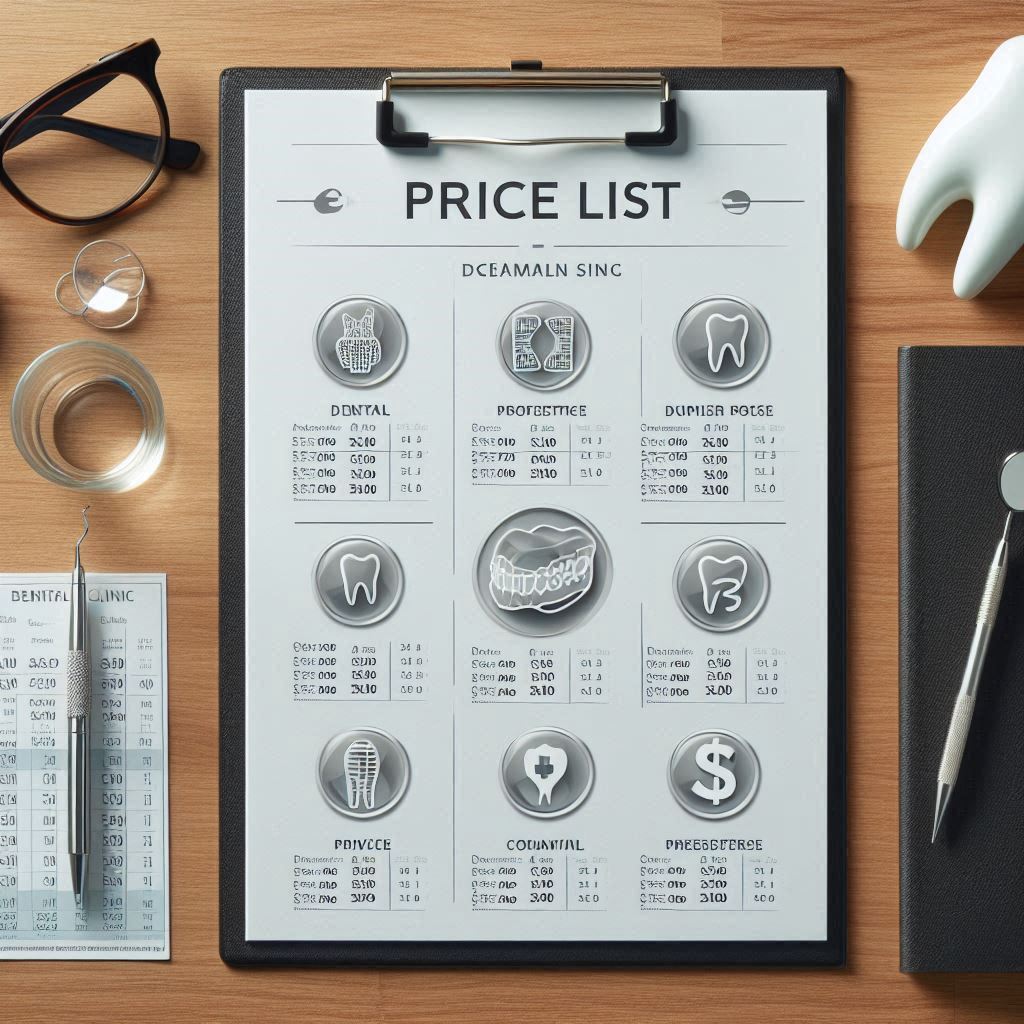Dental Code Price Lists
Dental care is an essential part of maintaining overall health, but navigating the costs associated with dental procedures can be overwhelming. From routine cleanings to complex surgeries, each service is tied to a specific dental code that determines its price. Understanding dental code price lists is crucial for patients, dentists, and insurance providers alike. This comprehensive guide will delve into the intricacies of dental codes, how they influence pricing, and what you need to know to make informed decisions about your dental care.

2. What Are Dental Codes?
Dental codes, also known as Current Dental Terminology (CDT) codes, are a standardized system used to describe dental procedures. Developed by the American Dental Association (ADA), these codes ensure uniformity in billing and record-keeping across dental practices. Each code corresponds to a specific treatment, such as a filling, extraction, or orthodontic adjustment.
Why Dental Codes Matter
- Standardization: Ensures consistency in how procedures are documented and billed.
- Transparency: Helps patients understand what they are being charged for.
- Insurance Claims: Facilitates accurate processing of insurance claims.
3. The Importance of Dental Code Price Lists
A dental code price list is a detailed breakdown of the costs associated with each dental procedure. These lists are essential for:
- Patients: To compare costs and plan for expenses.
- Dentists: To set competitive prices and maintain transparency.
- Insurance Companies: To determine coverage and reimbursement rates.
4. How Dental Codes Are Structured
Dental codes are alphanumeric and typically consist of a letter followed by four numbers. For example:
- D0120: Periodic oral evaluation.
- D1110: Prophylaxis (cleaning) for adults.
- D2740: Crown – porcelain/ceramic.
Each code is categorized into sections such as diagnostic, preventive, restorative, and surgical procedures.
5. Common Dental Procedures and Their Codes
Below is a table of common dental procedures and their corresponding CDT codes:
| Procedure | CDT Code | Average Cost (USD) |
|---|---|---|
| Routine Cleaning (Adult) | D1110 | 75−75−200 |
| Dental Exam | D0120 | 50−50−150 |
| Tooth Extraction (Simple) | D7140 | 75−75−300 |
| Composite Filling (One Surface) | D2391 | 90−90−250 |
| Root Canal (Molar) | D3330 | 900−900−1,500 |
| Porcelain Crown | D2740 | 800−800−1,700 |
6. Factors Influencing Dental Procedure Costs
Several factors can affect the cost of dental procedures, including:
- Geographic Location: Prices vary by region and local cost of living.
- Dentist’s Experience: More experienced dentists may charge higher fees.
- Materials Used: High-quality materials increase costs.
- Insurance Coverage: Out-of-pocket costs depend on your plan.
7. Understanding Dental Insurance and Code Pricing
Dental insurance plans often cover a percentage of the cost for specific procedures. However, coverage varies widely. Key points to consider:
- Preventive Care: Usually covered at 100%.
- Basic Procedures: Covered at 70-80%.
- Major Procedures: Covered at 50% or less.
Always verify coverage with your insurance provider before undergoing treatment.
8. How to Read a Dental Code Price List
A dental code price list typically includes:
- Procedure Code: The CDT code for the service.
- Description: A brief explanation of the procedure.
- Cost: The price charged by the dental practice.
Example:
| Code | Description | Cost |
|---|---|---|
| D0120 | Periodic Oral Evaluation | $100 |
| D1110 | Prophylaxis (Adult Cleaning) | $150 |
9. Regional Variations in Dental Pricing
Dental costs can vary significantly depending on where you live. For example:
- Urban Areas: Higher costs due to increased overhead.
- Rural Areas: Lower costs but fewer options.
10. Tips for Managing Dental Costs
- Compare Prices: Request price lists from multiple dentists.
- Ask About Discounts: Some practices offer discounts for cash payments or uninsured patients.
- Preventive Care: Regular cleanings can prevent costly procedures later.
11. The Role of Technology in Dental Pricing Transparency
Advancements in technology have made it easier for patients to access and compare dental prices. Online tools and apps now provide:
- Cost Estimators: Predict out-of-pocket expenses.
- Insurance Verification: Confirm coverage in real-time.
- Patient Reviews: Help choose a reputable dentist.
12. Case Studies: Real-Life Examples of Dental Code Pricing
Case Study 1: Routine Cleaning
- Patient: Uninsured
- Cost: $150
- Outcome: Prevented gum disease, saving thousands in future treatments.
Case Study 2: Root Canal
- Patient: Insured (50% coverage)
- Cost: 1,500(Patientpays1,500(Patientpays750)
- Outcome: Saved the tooth and avoided extraction.
13. Frequently Asked Questions (FAQs)
Q1: What is a dental code?
A: A dental code is a standardized identifier for a specific dental procedure.
Q2: How can I find out the cost of a procedure?
A: Request a price list from your dentist or use online cost estimators.
Q3: Does insurance cover all dental procedures?
A: No, coverage varies by plan and procedure type.
Q4: Can I negotiate dental prices?
A: Yes, many dentists are open to negotiation, especially for uninsured patients.
14. Conclusion
Understanding dental code price lists is essential for managing dental care costs effectively. By familiarizing yourself with CDT codes, comparing prices, and leveraging insurance benefits, you can make informed decisions about your oral health.


